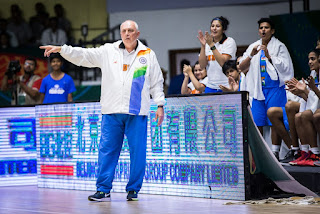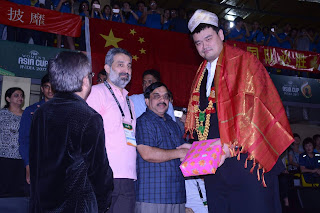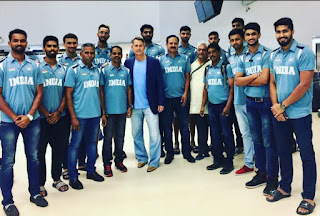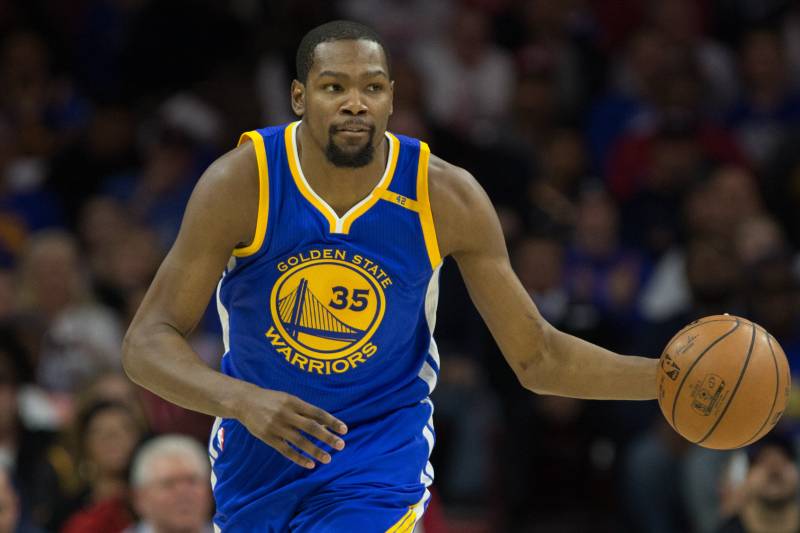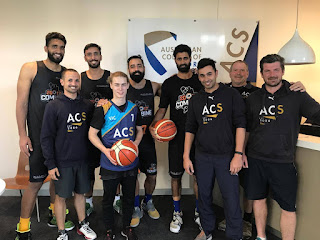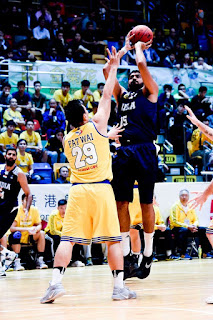How Warriors vs. Cavaliers in the NBA Finals was the greatest trilogy since Star Wars
This article was first published in my column for
Ekalavyas on July 10, 2017.
Click here to read the original piece.
 |
| Illustration by Eshita Munshi for Ekalavyas |
Even George Lucas in his prime couldn’t have conjured up a better tale of suspense, greatness, dominance, revenge, and heroism: for the first time in the NBA’s 70-year history, the Finals over three consecutive years featured a trilogy of the same illustrious matchup of the Golden State Warriors vs. the Cleveland Cavaliers. The three-peat of Finals featured future Basketball Hall-of-Famers, MVPs, All NBA talents, memorable role-players, and enough basketball ‘force’ to put the greatest Jedi to shame.
As a matter of fact, Warriors-Cavaliers from 2015-17 has been the greatest trilogy since the original Star Wars movies, released between 1977-1983. As an ardent fan of both mediums of entertainment, please allow me to explain.
The Prequel
Let’s set up the world before 2014-15, or in Star Wars terms, revisit the later films: Episodes I-III. In
The Phantom Menace, a young child with prodigious gifts named Anakin Skywalker is recruited by the Jedi for having unnaturally strong powers of the Force. Qui-Gon is convinced that Anakin is the “chosen one”. By
Attack of the Clones, Anakin is living up to his potential as the true heir to the Jedi greatness.
Sound familiar? In the early 2000s, a teenager with prodigious gifts named LeBron James emerges in the international basketball consciousness. James gets a “Chosen One” tattoo over his back and becomes the first pick in the 2003 NBA Draft by the Cavs. By the end of the decade, he has already won two MVP awards despite being dented a little in the 2007 Finals because of 4-0 sweep by the robotic clones, I mean, the San Antonio Spurs.
But by 2010, LeBron has realised that there is a greater, darker level of power available that the Cavaliers couldn’t provide for him. In spectacular fashion, he joins the Dark Side with Dwyane Wade and Chris Bosh, taking his talents down to South Beach, and immediately becoming the NBA’s biggest villain. Speaking of villains, Anakin in
Revenge of the Sith has had enough of the Jedi and joins the Dark Side, too. He puts on a mask, speaks in a heavier voice, and is now hated by everyone.
Anakin is now Darth Vader, and his dominance supports the Galactic Empire, which is ruling over the rest of the galaxy. LeBron is now in the Miami Heat and spurs a mini empire of his own with four straight Finals, two championships, and two more MVP awards. He returns to Cleveland in 2014 and immediately makes them the favourites in the East again.
A New Hope
Rebellions come from unexpected places. A ragtag bunch of underdogs, including a son of a farmer in the quite planet of Tattooine (Luke Skywalker), an imprisoned princess who is actually his twin sister (Leia), a trash-talking pilot (Han Solo), his weird Wookie friend (Chewbacca), and two ever-confused droids (C3P0 and R2D2) lead an unlikely Rebel Alliance. No one expects much from them against the bigger badder lord of the Force Vader or the Empire.
Meanwhile, an innocent, harmless-looking hero just like Luke is called to action and realises that he, too, has some special powers of the force. His name is Stephen Curry, and his power is the three-point shot, and he has a sibling like Leia blessed with the force, too, except this sibling is a brother-in-splash and his name is Klay Thompson. With the rise of second-round pick and legendary trash-talker Draymond Green, this alliance of rebels – or Warriors from the Golden State – end up having the best record in the NBA in 2014-15 to go against the “Chosen One”.
Skywalker and the Alliance find a weakness in the Death Star and set out to destroy this vulnerable exhaust port to take down the Empire’s weaponised ship. For the Cavaliers, injuries to Kyrie Irving and Kevin Love leave them vulnerable in the finals, and even Lord Vader LeBron wasn’t enough to stop Curry and the Warriors from snatching the victory. At the very end of
A New Hope, the heroes of the Alliance are honoured on a pedestal just like NBA champs are handed the trophy on centre-court.
The Empire Strikes Back
Considered by many to be the finest
Star Wars film ever made, the second of Warriors-Cavaliers clashes in the Finals was also the most entertaining. In
The Empire Strikes Back, the champion Rebels are now gaining more ground and setting up a legitimate base on the planet Hoth. Luke Skywalker spends much of this film improving his Jedi powers under the tutelage of Master Yoda. Before the final clash, it seems like he’s becoming, unanimously, the greatest Jedi around. The Millennium Falcon ship, brags Solo, can make hyperspace faster than the speed of light.
Oh, and the Warriors, their owner brags, are “lightyears ahead” of the rest of the NBA. They start 2015-16 on a 25-game winning streak and end up the season as the greatest regular season team ever, with a 73-9 record. Jedi Stephen dominates historically on all fronts to become the NBA’s first regular-season MVP. He is popular and likeable, and over in Cleveland, Lord LeBron is troubled by his rise.
The finale sets up another classic clash of the two warring sides. Just when it seems that all is going right for the Warriors, Draymond Green gets suspended for a nut-punch at LeBron in the Finals. His spiritual twin in
Star Wars, Han Solo, is locked up in suspended animation in a block of carbonite. Things go awry for Golden State as LeBron reasserts his greatness, “strikes back” at the Warriors, and leaves them in tatters. By leading the Finals in all categories as the Finals MVP, he literally “sons” the unanimous MVP Curry and reminds him who is the greatest. Curry is injured and lost, and at the end of
Empire, so is Luke Skywalker: Vader makes the big revelation that he is Luke’s father, cuts off Luke’s hand, and brings him down. After suffering a surprising loss in the previous Episode, Vader regains his place at the top.
Return of the Jedi
Luke Skywalker has to bring down his father, but he can’t do it alone. Han Solo is rescued, Princess Leia is in top form, and the gang is back together. In the previous instalment, Lando Calrissian betrayed his friend Solo; this time around, he has joined the Alliance, too. A bunch of Ewoks are destined to play a small but important role. The Jedi in the final film return more stacked than ever, and are determined to defeat the Empire.
Kevin Durant joins the Warriors, but he is no Lando: he is more like a mixture of Yoda’s smooth style and Luke Skywalker’s heroism. Our original Luke – Curry – now grows a beard to try and look more menacing. The rest of the gang is at the top of their games, role players like Iguodala, Livingston, and West play an important part, and the Warriors have yet another dominant season. Oh yeah, and JaVale McGee is Jar Jar Binks. No matter how much they Shaq’t-a-fool, you can’t knock on those rings.
The finale of the trilogy is the 2017 NBA Finals, or the final battle on the moon Endor and the Death Star. Despite predictions that this will be the most epic end to these “Wars”, the final doesn’t have the tension and excitement of the previous episode. Kevin Durant, the newest Jedi, returns to the final after being defeated by Lord LeBron in 2012, and this time – along with Curry – he gets his revenge. The Warriors win 4-1 while the Rebel Alliance blow some shit up. LeBron or Vader, despite excellence performances, lie lost in the end and defensively begin to look their age. There is a touching moment of mutual respect between LeBron and Durant, who is the former’s spiritual successor/son as the greatest of his generation. As the Warriors celebrate centre-court on their home floor, there is an Ewok party in Endor.
The Next Episodes
The latest episodes of Star Wars showcase a new generation of young rebels going against the newly-strengthened First Order. The son of Leia and Solo, Kylo Ren, is the new bad boy in the galaxy. Despite the new characters and plotlines, a lot of the themes of
The Force Awakens provide nostalgia for the original trilogy.
The Warriors are sure to remain dominant for many more seasons, and despite some rise of talent in the East, odds are that it will be LeBron and the Cavs in the finals again next year. Some things will be different, but the general themes of this legendary rivalry will remain the same. Meanwhile, the NBA continues to change and evolve in reaction to the Warriors’ greatness and every team is starting to look for the next superstar player to usurp them, someone who can be a versatile defender like Draymond and shoot like Klay – or the child of Leia and Solo.
As for the next Star Wars film releasing later this year: I don’t know anything about
The Last Jedi, but in NBA terms, it sounds a whole lot like Russell Westbrook. May the rings be with you all!







